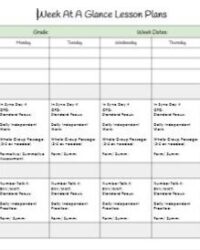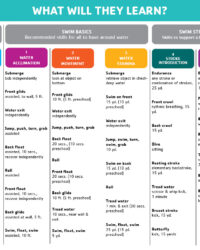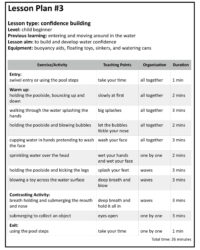In the bustling world of education, finding effective ways to teach foundational skills is always a top priority. Direct instruction, as a teaching model, stands out for its clear, sequential, and highly structured approach, making it incredibly effective for imparting new knowledge and skills, especially when students are learning something for the first time. It is all about directly showing students what they need to learn, guiding them through practice, and ensuring they can do it independently.
So, if you are looking to streamline your lesson planning and ensure every student grasps essential concepts, developing a robust direct instruction model lesson plan template is an absolute game-changer. This template acts as your reliable blueprint, ensuring consistency, clarity, and comprehensive coverage in every lesson you deliver. It helps you anticipate student needs, scaffold learning effectively, and make sure no crucial step is missed in the learning process.
Understanding the Core Elements of a Direct Instruction Lesson
At its heart, direct instruction follows a logical progression that moves from teacher-led modeling to independent student application. This isn’t about rote memorization; it’s about breaking down complex skills into manageable steps, explaining each step clearly, demonstrating how to execute them, and then providing ample opportunities for students to practice with support, gradually reducing that support until they can perform independently. It is a systematic way to build proficiency.
The journey begins with the “I Do,” or modeling phase. Here, you, the teacher, are center stage, clearly articulating the lesson’s objective, explaining the new concept or skill, and then demonstrating it step-by-step. Think aloud as you work through examples, explaining your reasoning and thought processes. This transparency helps students understand not just what to do, but why and how to think about it. It is your chance to explicitly show them the path to success.
“We Do” Guided Practice
Following your clear demonstration, it is time for the “We Do” phase, also known as guided practice. This is where students begin to apply the new skill or concept with your immediate support and supervision. You might work through additional examples together as a whole class, in small groups, or with partners. During this stage, constant monitoring and immediate feedback are crucial. You are listening for misconceptions, correcting errors on the spot, and reinforcing correct understanding. This collaborative practice builds confidence and solidifies their initial grasp of the material before they are left to work on their own.
“You Do” Independent Practice and Closure
Once students demonstrate a reasonable level of understanding during guided practice, they move into the “You Do” phase, or independent practice. Here, students work on their own, applying the skill without direct teacher assistance. This might involve completing a worksheet, solving problems, or working on a project. It is their opportunity to truly internalize the learning and demonstrate mastery. Finally, every strong direct instruction lesson concludes with a clear closure, where you review the main points, summarize the learning, and connect it back to the initial objective. This helps students consolidate their knowledge and understand what they have accomplished.
Crafting Your Own Direct Instruction Model Lesson Plan Template
Creating your own direct instruction model lesson plan template means you are building a tool that will save you countless hours in the long run. Imagine having a pre-structured document that prompts you for all the essential components, ensuring you never forget a step, from setting clear objectives to planning for differentiation. This template becomes a consistent framework that not only organizes your thoughts but also ensures a high level of instructional quality for every lesson.
Beyond saving time, a well-designed template helps you refine your teaching practice. As you use it repeatedly, you will start to identify patterns in effective lesson design and areas where your lessons could be strengthened. It provides a systematic way to reflect on your instruction, leading to continuous improvement. Furthermore, it can be an invaluable resource for collaborating with colleagues or for new teachers who are still learning the ropes of lesson planning.
So, what should you definitely include in your direct instruction model lesson plan template? Think about all the pieces that make a lesson flow seamlessly and effectively from start to finish. Here are some key elements to consider:
- Lesson Title and Subject: Clear identification.
- Grade Level and Duration: Practical logistical details.
- Learning Objectives (SWBAT – Students Will Be Able To): Specific, measurable, achievable, relevant, time-bound goals.
- Materials Needed: A comprehensive list of resources, tools, and handouts.
- Prior Knowledge/Prerequisite Skills: What students should already know.
- Introduction/Anticipatory Set: How to hook students and activate prior knowledge.
- “I Do” – Explicit Instruction/Modeling: Detailed steps of your demonstration.
- “We Do” – Guided Practice: Activities for collaborative learning with teacher support.
- “You Do” – Independent Practice: Activities for individual student work.
- Assessment: How you will check for understanding and mastery.
- Differentiation/Support: Plans for supporting struggling learners and challenging advanced ones.
- Closure: How you will summarize and reinforce learning.
Embracing a structured approach to lesson planning, especially one built on a direct instruction model lesson plan template, empowers educators to deliver content with precision and clarity. It minimizes guesswork, maximizes instructional time, and ultimately leads to more consistent and impactful learning experiences for students. By having a clear roadmap for each lesson, you can focus more on the art of teaching and less on the logistics of planning.
Investing the time upfront to develop or adapt such a template will pay dividends in enhanced teaching efficiency and improved student outcomes. It is a powerful tool for any educator committed to ensuring every student acquires essential skills and knowledge effectively. Start building your template today and experience the transformative power of organized, purposeful instruction.


